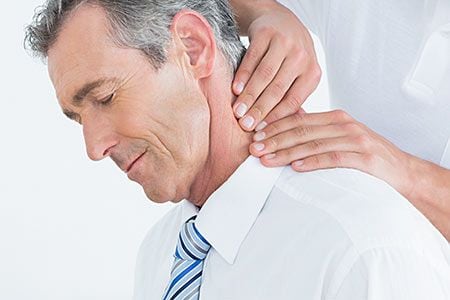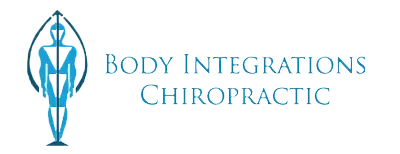Myofascial Release

Myofascial release is a gentle, hands-on therapy that uses pressure on specific muscles and connective tissues to release tension and improve flexibility. “Myo” means muscle. “Fascia” is connective tissue that sits below the skin and stabilizes, covers, attaches and separates muscles, nerves, blood vessels and organs from one another. Myofascia, specifically, refers to the fascia that surrounds and separates muscles.
Throughout the body, fascia can be found in bands or sheets and is strong and durable. It is tightly woven, kind of like a spider’s web, and that woven design is what gives fascia its strength. Perhaps one of fascia’s most interesting features is that it is actually one continuous structure from the head to the feet. That is why a fascial restriction in one area of the body can cause symptoms somewhere else.
Fascial/Myofascial Restrictions
When the body is in a healthy form, fascia is able to move and stretch freely. However, muscle and joint problems in the body can cause restrictions in the fascia. Myofascial restrictions can cause significant pain and pressure within your body.
Sometimes, fascial restrictions happen as part of your body’s natural healing process. As an example, we often hear or read about scar tissue being formed after a surgical procedure or after an injury. Scar tissue is actually the healing of the fascia. But sometimes when the fascia heals, it is thicker and more tense in that area than it was before the surgery or injury. This thicker and tenser fascia can pull and tug on other fascial tissue, which causes pain and a change in the tissue layout. (Remember the spider web we talked about before? Imagine a lump in it—the whole web gets pulled in different directions.) There are specific myofascial release techniques that can help break down scar tissue and rework tissue in the right direction and general pattern.
There are other causes of fascial restrictions as well. Inflammation, poor posture, repetitive motion, less severe injuries and trauma (both physical and emotional) can create fascial and/or myofascial restrictions and can cause pain and restricted motion in one or multiple areas of the body.
Diagnosing Fascial/Myofascial Restrictions
Diagnosing these types of restrictions is done through physical examination. We are looking for tender points in tense muscles by applying gentle pressure to specific muscles and muscle groups. Often, we will feel the muscle “twitch” when we have found a myofascial problem in a certain area, and sometimes applying that gentle pressure causes referred pain, or pain in another area.
Currently, we do not have a way to see fascia or myofascia using any type of medical imaging (x-ray, CT-scan, MRI, etc.), so the physical examination turns out to be very important for making an accurate diagnosis of myofascial restriction or myofascial pain syndrome (a chronic pain condition).
Myofascial Release Is Not Massage Therapy
Myofascial release is different from massage therapy. The main focus of myofascial release is to align the fibers of the fascia within the fascial network. Myofascial release is often recommended along with chiropractic adjustments to focus on soft tissue problems such as trigger points (muscle knots), which can lead to tension and pressure on nerves created by the pulling and tugging on the fascia where it is not meant to be pulled or tugged. Working on these soft tissue dysfunctions often reduces pain and increases pain-free ranges of motion. Myofascial release takes time, as gentle pressure is applied over the myofascial or fascial restrictions slowly, allowing the tissue to elongate and release.
Many of us have experienced muscle pain, and usually that pain gets better within a few days to weeks. If you are dealing with muscle pain that is not improving, or if you have difficulty moving because of muscle pain, myofascial release may be a treatment option for you.
Active Release Technique Therapy
Active Release Techniques (ART) are chiropractic methods focused on relieving soft tissue tension. ART is often used to relieve problems with muscles, ligaments, tendons, and even fascia and nerves. The goal of ART therapy is to restore mobility in the body by breaking down adhesions in the body that cause resections and limited movement.
ART therapy sessions are very beneficial to chiropractic patients from all walks of life, including those with damaged tissue in the muscles, ligaments, and tendons. ART also provides relief and comfort to people suffering from any type of musculoskeletal condition. ART helps to increase blood flow, promote faster healing, and provide relief to the body. This therapy can treat acute and chronic conditions and is also often used to treat those suffering from sports injuries.
What Does ART Therapy Do?
Active release therapy is designed to break up scar tissue that has formed over time. Breaking up scar tissue restores mobility and improves bodily functions, helping with increased blood circulation in the body, as well as less overall pain and stiffness. Other benefits of ART therapy sessions include:
- Increased range of motion
- Decreased joint inflammation
- Increased muscle strength
- Increased cardiovascular health
ART therapy is also used to treat plantar fasciitis, carpal tunnel syndrome, chronic neck pain, lower back pain, sciatic nerve pain, and any other injuries caused by repetitive muscle use. ART therapy is ideal for treating a wide range of conditions and removing scar tissue buildup.
The Technique
Muscles and tissue are prone to negatively changing due to trauma. They can begin to swell and start to form scar tissue. During an active-release therapy session, Dr. Nicol applies manual pressure, typically with the hands or sometimes a therapy tool, to address the trauma-induced abnormalities found in the muscles or tissues.
Dr. Nicol will then apply deep pressure at the area of tenderness to work on breaking down any scar tissue and to increase blood circulation to the area, promoting healing. Doing this in a repetitive manner will eventually break down the scar tissue completely and return a full range of motion.
While Dr. Nicol utilizes the Active Release Technique, you will be required to move the designated body part, as the combination of tension and motion will lengthen and shorten the muscle, aiding the therapy process. This process continues until a release is felt, which is the breakdown of scar tissue and the return of mobility.
Dr. Nicol restores the normal range of motion (normal body movement) to joints and muscles by breaking up scar tissue (adhesions) in the muscles using his hands. This is a specific deep transverse friction massage that Dr. Nicol has been using for 37 years.
Who is ART Therapy For?
ART therapy can help active people of all levels. Whether you are an athlete, someone who loves to go for walks, someone who enjoys taking hikes, or simply someone that wants better mobility, ART therapy helps to enhance all mobility, functions, and movements. ART Therapy is a great option for anybody looking for better health and wellness.Experience Total Wellness With Body Integrations Chiropractic
At Body Integrations Chiropractic, we aim to perform our work according to God’s plan by using the highest level of ethics and integrity to improve your health and wellness. With over 50 years of combined chiropractic therapy experience, Dr. Bill Nicol and Dr. Mary Nicol are dedicated to improving the health of each patient by healing pain with a case-based approach. You deserve to live a pain-free life you love. Contact us today by calling
(713) 781-3114
to book your appointment.
